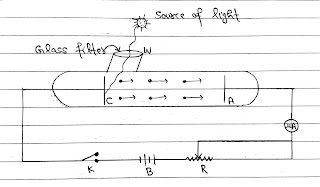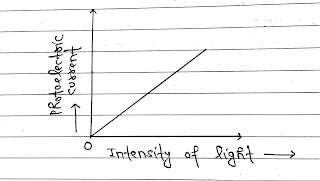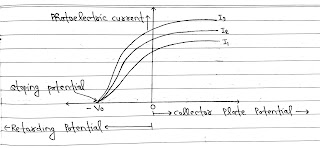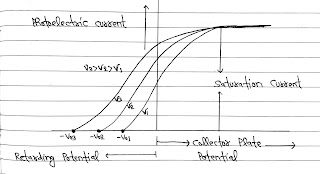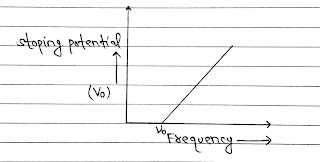Photoelectric Effect:
It is the phenomenon of emission of electrons from the surface of metal, when radiations of suitable frequency fall on it. Or
The phenomenon of converting light energy into electrical energy is called Photoelectric effect.
The emitted electrons are called photoelectrons and the current, so produced is called photoelectric current.
Threshold Frequency: For a given material, there exists a certain minimum frequency of the incident radiation below which no emission of photoelectrons take place. This frequency is called threshold frequency.
Experimental Study of Photoelectric Effect:
The the Apparatus consists of an evacuated glass or Quartz tube which encloses a photosensitive plate C called emitter and a metal plate A called collector.
A transparent window W is sealed and glass tube which can be converted with a filter for light of particular radiation. This will allow the light of particular wavelength to pass through it.
When monochromatic radiation of suitable frequency fall on plate C through glass filter, the electrons are emitted by the plate C and are collected by plate A. When the collector plate is positive with respect to the emitter plate C, the electrons are attracted to it and hence photoelectrons current is constituted. The potential difference between the emitter and collector plates is measured by a voltmeter(V), we whereas the resulting photocurrent flowing in the circuit is measured by a microammeter(μA).
Effect of Intensity of light on Photocurrent:
For fixed frequency of incident radiation and accelerating potential, the photoelectric current increases linearly with increase in intensity of incident light.
Effect of Potential on Photoelectric Current:
For a fixed frequency and different intensity of light photoelectric current increases with increase in potential applied to Collector. When all photoelectrons reached the plate A and if we increase the potential applied to collector further, then photocurrent does not increase. This maximum value of photoelectric current is called saturation current.
If we reverse the battery, the plate A is at negative potential. Therefore at certain potential the photocurrent becomes zero at a particular value of negative potential V₀ is called stopping potential, when current becomes zero.
Effect of Frequency of Incident Radiation on Stopping Potential:
If we take radiations of different frequencies but of same intensity, then for greater frequency the potential is more negative. The value of saturation current depends on the intensity of incident radiation but it is independent of frequency of the incident radiation.
# If we plot a graph between stopping potential and the frequency of incident radiation, then the stopping potential V₀ varies linearly with the frequency of incident radiation for a given photosensitive material.
There exist a certain minimum cut-off frequency v₀ for which the stopping potential is zero.

